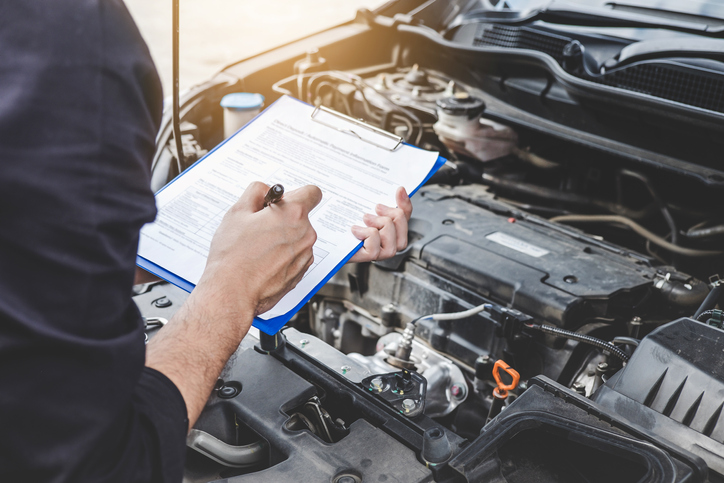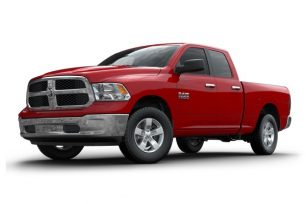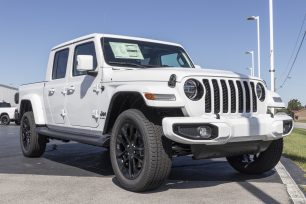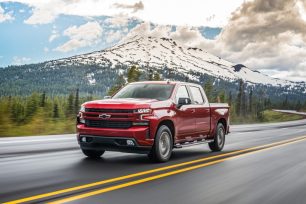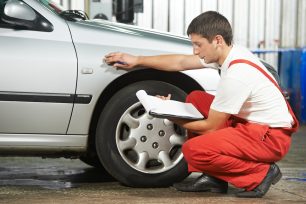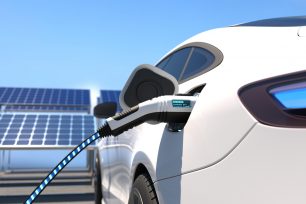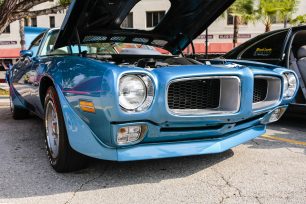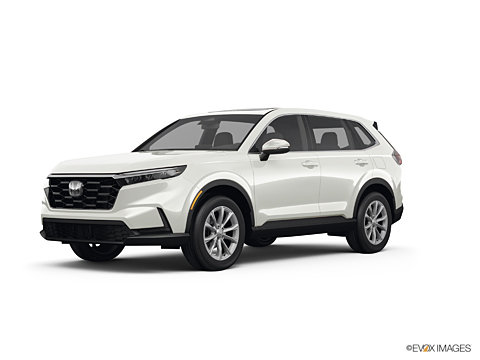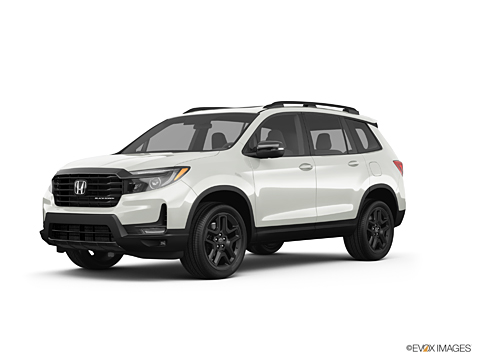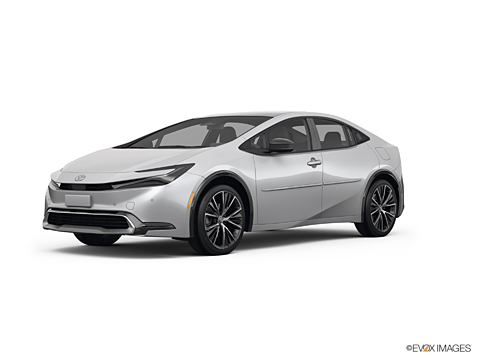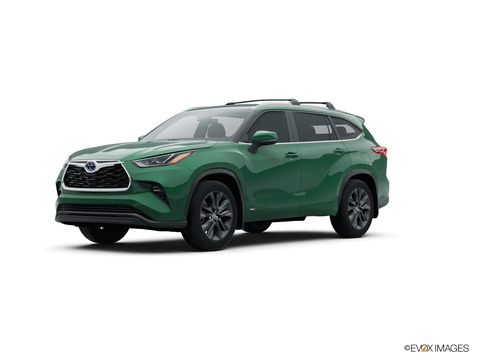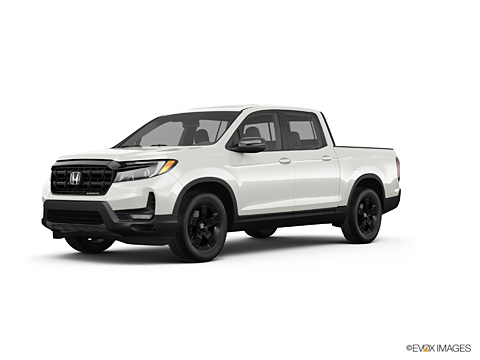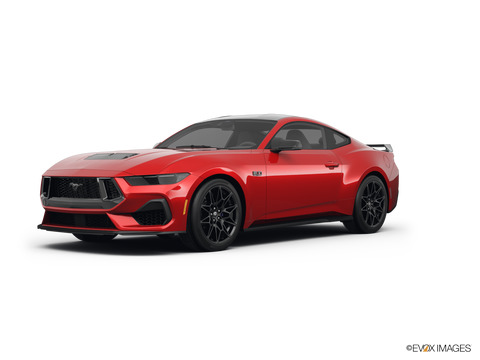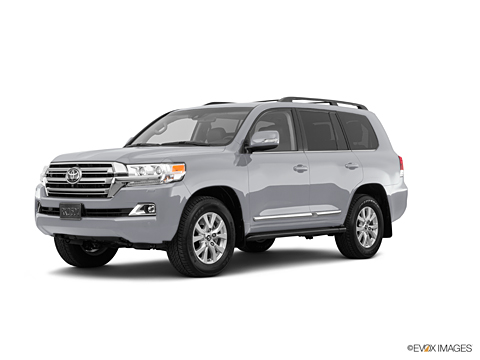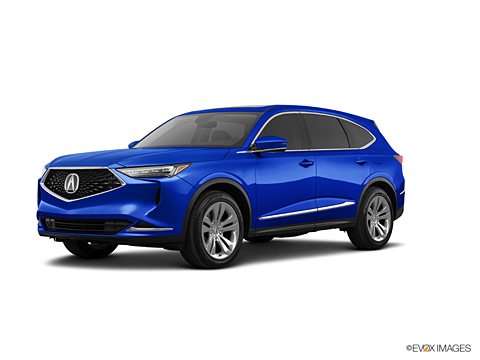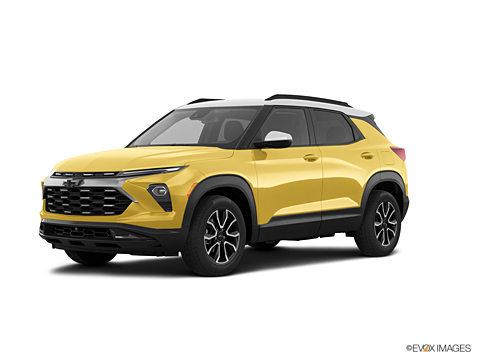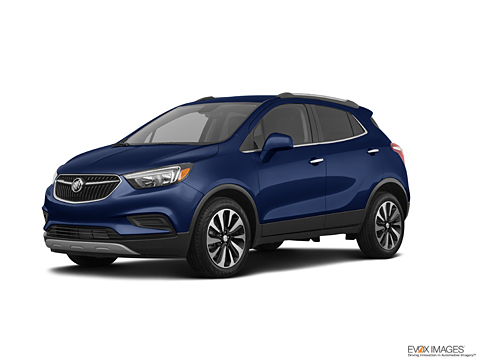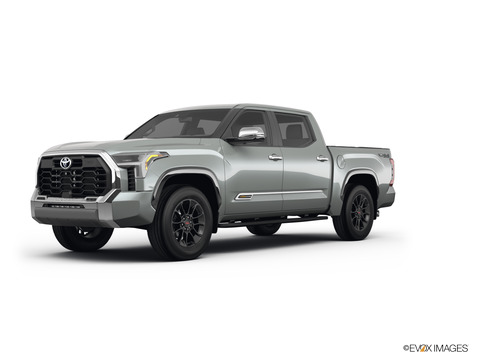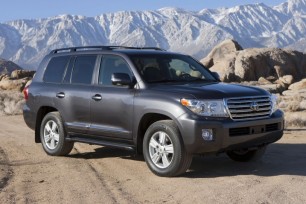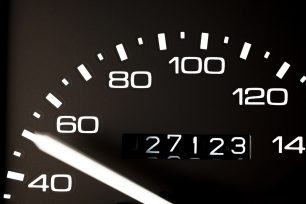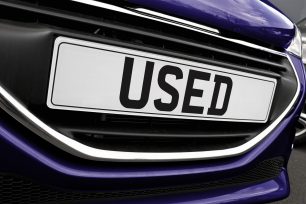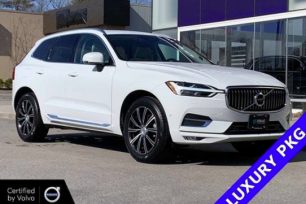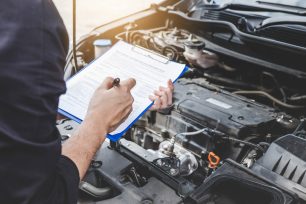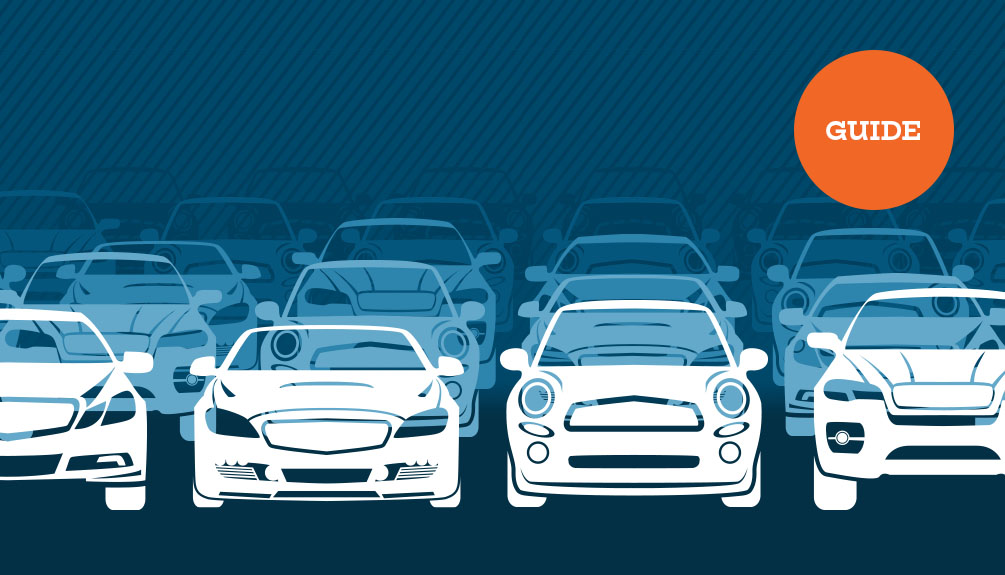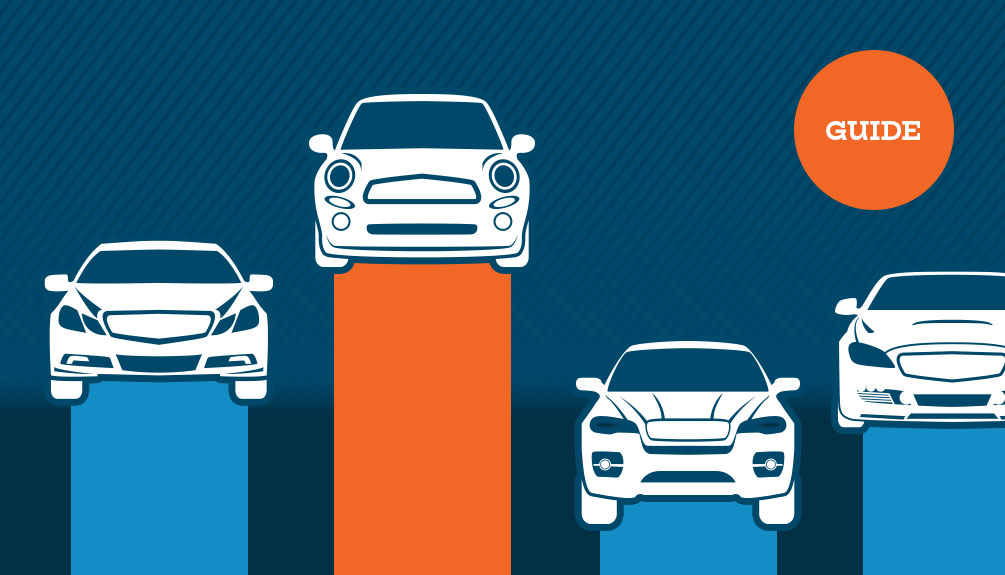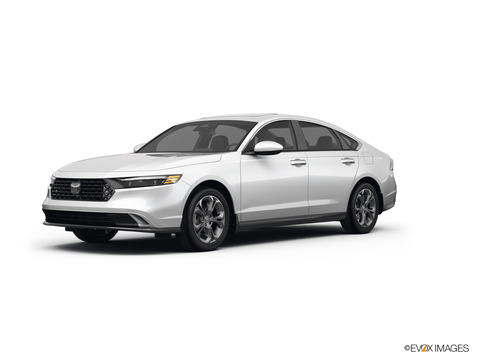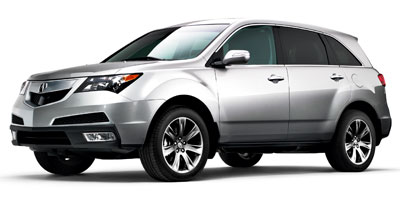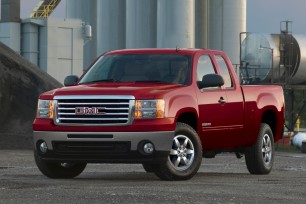In the market for a used car? With used car prices at record highs, it’s more important than ever before to be confident in your used car purchase. Used vehicles can be diamonds in the rough, nightmares on wheels, or something in between. Knowing what to look for when buying a used car can go a long way toward understanding a car’s condition, and help you make a smart purchase decision.
Whether you’re buying from a dealership or a private party, here’s our comprehensive guide on what you should look for the next time you’re shopping for a used car.
Look for Accident Damage
We get it - everybody gets in a fender-bender now and then. But that doesn’t mean you want a previous owner ’s poorly repaired car that previously doubled as a battering ram. Luckily, there are a few telltale signs of accident repair that can be easy to spot if you know what to look for.The quality of the paint job is the first thing to inspect, and is usually the easiest way to determine whether a car has been in some sort of collision. Look first to see if the coloring on one body panel is different in shading or tone than the rest of the car. If a fender looks lighter or darker than the rest of the car, there’s very good odds it was repainted at some point or another.
Panel gaps can also be suggestive of accident repair. The average auto body shop likely won’t reassemble a damaged car to the exacting standards of the factory. This can be for a number of reasons: ill-fitting aftermarket parts, employee skill levels and time constraints, or structural ripple effects from the accident. But the end result will be the same: non-uniform panel gaps.
Look particularly close at the four corners of the car as well as the front and rear fascias - all common places for an accident to occur. Run your hand along the small gaps between the panels. Does it widen or narrow considerably? Is there anywhere you can stick your finger between two body panels? Do panels improperly align when they come to a junction?
If a car hasn’t been altered from the factory, the answer to all the above questions should be no. If you find a car where this isn’t the case, return to the classifieds and keep looking.
Any suspicions of prior accident damage can often be confirmed by getting a vehicle history report. These comprehensive reports use the vehicle identification number (commonly referred to as the VIN) and should disclose any incidents that would have triggered insurance involvement. CARFAX is the best known purveyor of vehicle reports, but there’s plenty of other options as well such as Autocheck. You can learn about the differences between Autocheck Vs. CARFAX with our handy guide.
So how do you obtain a vehicle history report? Used car listings on iSeeCars.com include a free VIN check, which often links to a free CARFAX or Autocheck report when provided by the dealer. Otherwise, a CARFAX report costs $39.99 for a single report, but can be cheaper if you purchase multiple reports at once, while an Autocheck report costs $24.99. The VIN report will also provide you with important information about the car to complement the CARFAX report, such as listing history, pricing analysis, and projected depreciation. The report can also be accessed via the iSeeCars VIN Report app, available for iOS and Android, which allows users to instantly view the comprehensive report while browsing the used car lot after scanning the vehicle’s VIN barcode.
Ask for Service Records
Along with a vehicle history report , ask about service records as well. Many fastidious owners keep receipts of all the maintenance records for services they may have performed on the car. This is the best way to ascertain what sort of mechanical condition the car is in.Some service history may be found on a vehicle history report, but these reports typically only include work that was performed by a dealership and not by an independent mechanic.
Inspect the Tires
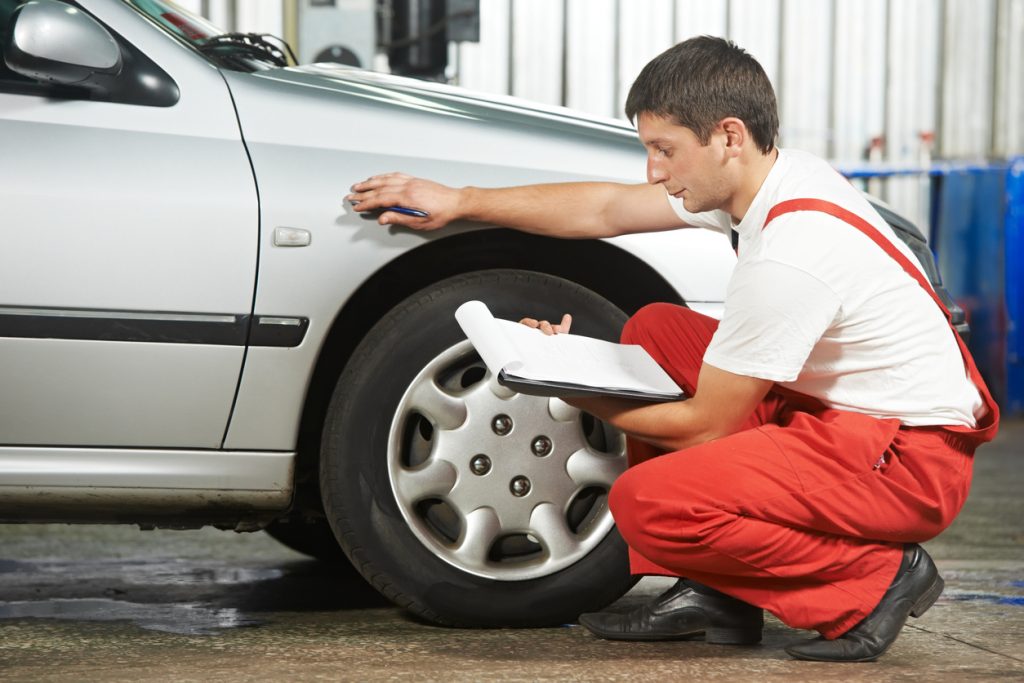 After you’ve taken a good look at the paint job and body, inspect the tires. You ideally want to see four matching tires. If it’s wearing multiple different kinds of tires, the different tread designs and asynchronous treadwear mean handling will be compromised, as will inclement-weather performance. A car drives best when equipped with one type of tire all the way around.
After you’ve taken a good look at the paint job and body, inspect the tires. You ideally want to see four matching tires. If it’s wearing multiple different kinds of tires, the different tread designs and asynchronous treadwear mean handling will be compromised, as will inclement-weather performance. A car drives best when equipped with one type of tire all the way around.
Another thing to look out for with tires is tread depth. Tires wear out as you drive on them. As they wear, the tread recedes. Keep running them long enough and you’ll eventually get bald tires - the term for tires that have no tread left. And when there’s no tread, there’s nothing gripping the road, which can be a severe safety hazard. Be sure to inspect the tires for good tread depth.
Evaluate the Interior
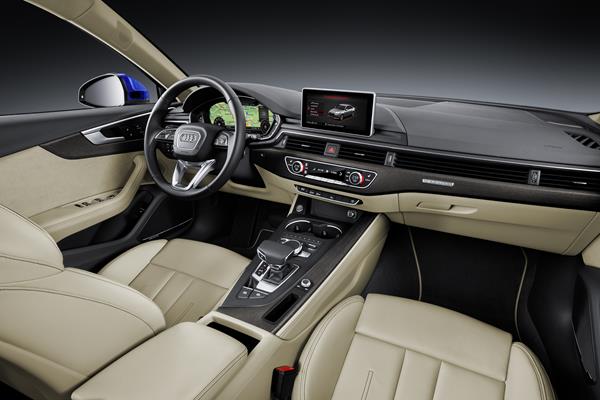 Inside, evaluate the interior. Inspect stitching, door pulls, and the lower plastics on the doors for scuffs, looseness, and general wear. Take a look at the
upholstery
for excessive cracks and tears. Make sure all the electrical features work - mirrors, windows, reading lamps, and whatever other gadgets the car might be equipped with. Run the
air conditioning
and make sure it’s cold, and do the same with the heat to verify it’s warm.
Inside, evaluate the interior. Inspect stitching, door pulls, and the lower plastics on the doors for scuffs, looseness, and general wear. Take a look at the
upholstery
for excessive cracks and tears. Make sure all the electrical features work - mirrors, windows, reading lamps, and whatever other gadgets the car might be equipped with. Run the
air conditioning
and make sure it’s cold, and do the same with the heat to verify it’s warm.
Double check that the odometer readout is what the salesman or private seller is claiming. There shouldn’t be any shenanigans with actual tampering - that old trick of shady used car dealers isn’t quite as easy to do nowadays, what with the digital readouts found in modern cars - but you want to make sure the dealership isn’t trying to bait you into looking at a car with more mileage than they may have initially claimed.
Remember that some wear is guaranteed; unless you’ve stumbled on a used car worthy to be a museum specimen, expect to find imperfections. But there’s no need to buy a car that shows signs of excessive wear and tear when there’s plenty of other options out there. Find a car that looks like it was treated in the same manner that you intend to treat it.
Beware of Water Damage

Water damaged cars from a flood or even as a result of leaving windows or the sunroof open can pose a significant safety risk because water corrodes mechanical parts and can hinder important safety features like airbags and antilock brakes. While water damage may not be immediately obvious during a visual inspection, there are telltale signs if you know what to look for.
Along with a visual interior inspection, you should also perform an inspection with your nose. If the inside smells moist or like mildew, it could mean that there is water damage or leaks. Also beware of excessive car deodorizer, which can be an attempt to mask the smell.
Another indicator is new interior fabric or upholstery that is in far better condition than the rest of the vehicle. If the interior was replaced, the chances are good that water damage may have been the culprit. Be sure to pull back carpeting and look under floor mats for signs of staining.
Lastly, inspect vehicle lights to see if there are any visible water lines or if they appear foggy.
Check for Rust
Rust under the car can be another indicator of water damage , but it can also appear if a car was regularly exposed to harsh weather. Rust can be a sign of serious bodywork issues down the line. Rust negatively impacts the price of the car and most often appears around the wheel wells, at fastening points (wherever screws or bolts go through the panels), and underneath the vehicle at frame mounting points and around fasteners and connection points on the chassis.Visually inspect for rust as best you can.
A professional mechanic should look more closely if the car passes your initial inspection. On a car’s body, rust is repairable but can be expensive if you aren’t a do-it-yourself bodywork expert. Rust on the working parts of an automobile can be a sign of serious issues coming soon, and it's a good reason to pass on the vehicle's purchase.
Delve Under the Hood

It might not be so important when buying a new car, but when you’re shopping for a used car it’s critical you pop the hood and take a look at the engine. Even if you don’t know an air filter from an air balloon, there’s some universal red flags to keep an eye out for - and if you can spot them you’ll be saving yourself from unwanted expense and heartache.
The easiest place to start is with the fluid levels in all the reservoirs. When you’re poking around the engine bay you’ll see power steering fluid, brake fluid, windshield washer fluid, transmission fluid, and coolant. It’s no big deal if the wiper fluid is looking low, but all the others should read between the designated full/add marks clearly labeled on each reservoir, or on the dipstick in the case of engine oil.
Like the oil, the transmission fluid has its own dipstick (on automatic transmission models). Trans fluid can vary in color, but it's usually red or green. It should be clean and at the correct level, according to the dipstick marks. More importantly, it should not smell burnt or metallic. Transmission fluid with questionable quality (dirty, of mixed color) or smelling burnt is reason to believe that expensive transmission problems are coming. The transmission dipstick is located under the hood in the engine compartment. It’s typically clearly marked with a transmission symbol or with a specific color.
It’s rare when power steering or brake fluid is low or dry, but coolant is a bit more fickle. Coolant keeps the engine operating at the right temperature. Some cars have been known to have coolant issues if the head gasket - an important bit of rubber that ensures a snug fit between the engine block and the cylinder head - begins to deteriorate. This is a common malady in old Subarus, for instance. If you don’t want a potential four-figure repair bill be sure to inspect the coolant. When the engine is cool, you can remove the cap and look at the fluid in the radiator. Vehicles equipped with an overflow can have that fluid inspected as well, but nothing beats looking at the fluid that’s actually circulating in the car. It should be a uniform color that’s clean and oil-free. Dirty coolant is not a reason to walk away from a purchase, but coolant that's contaminated could indicate other problems, which can be worrisome.
It’s also important to inspect the condition of the coolant, not just how much is in the tank. Unlike the other fluids, coolant has a relatively short shelf life, and should be changed regularly according to the interval in the owner’s manual. Neglecting this can cause trouble down the road. Be sure to look at the coolant and confirm it’s a light, slightly opaque color. It should not look dark, muddy, or thick. That’s a serious sign of potential trouble. Be sure to also look at the condition of belts and hoses. These are rubber pieces; over time they become brittle and dry, especially with the temperature swings that regularly occur under the hood. You want these parts to have a little bit of give when you prod them with a finger, and you don’t want to see any cracks.
Don’t be afraid to pull the dipstick and double check the oil. Good oil has a golden brown color and it should be within the hashes, holes, or crosshatches that all might mark the acceptable range of oil. If you get a dry dipstick, oil that looks milky-white, or a dipstick encased in sludge, don’t walk away - run.
And an easy thing to forget but certainly worth doing is looking under the car for leaks. If you see any puddles that aren’t water from condensation near the air conditioning system, move on.
Are There Any Open Recalls?
While recalls are not that uncommon, it’s important you make sure that any recalls on the vehicle you’re looking at have been handled properly. If the seller doesn’t know, steer clear of this car. It could have untended safety recalls that could put you at risk. The iSeeCars VIN check includes a Free Recall Check that links to the NHTSA database and will identify if there is an open recall for any new or used cars. It also includes information about all past recalls that affected the vehicle. Along with presenting a safety hazard, unresolved recalls can result in a failed vehicle inspection. If a vehicle has an open recall, ask the dealership to address the recall notice, which will likely involve recall repairs.Take a Test Drive
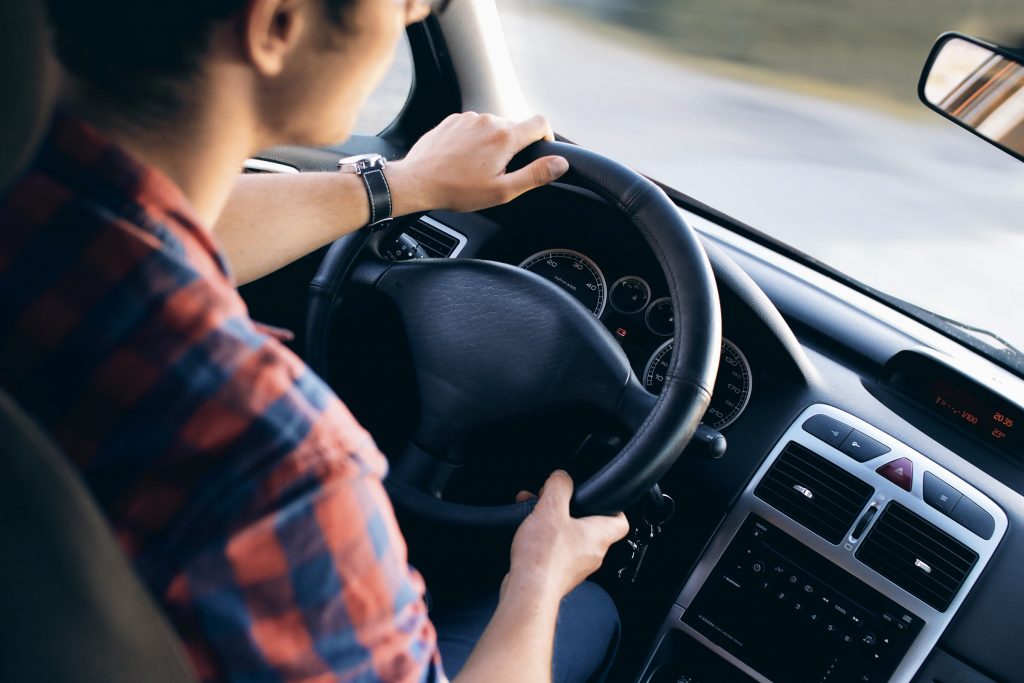
So you’ve done a thorough walk-around and the car looks good. Now it’s on to the most important aspect of the used-car buying process: the test drive.
It’s tempting to blast the radio and roll the windows down as if you’ve already signed the paperwork, but the test drive process needs to be approached more judiciously if you’re to learn whether the car is hiding any ugly secrets. To that end, there are a few good strategies to use that will help sniff out any trouble lurking behind a pretty paint job.
The first thing you want to do is start the car with the windows up and the climate control and radio turned off. Listen to the idle and look at the tachometer. Is the car idling smooth? Did it start right away? Are they any noises that seem suspect? Unless it’s very cold out, a good car will start quickly and promptly settle into an even idle, indicated by the tachometer needle hovering consistently at an appropriate increment.
You can also ask the seller to start the car for you as you stand outside and look closely at the exhaust pipe as it starts. A quick, small puff or steam or dark brown material isn’t an issue, but if white or blue smoke is emitted for more than a second or two it could indicate unwanted engine wear or other problems. Analyzing a car’s exhaust pipe and overall engine smoothness is particularly telling during a “cold start” (meaning after the car has sat for at least 12 hours without the engine running).
Once it’s idling without issue, double check the instrument cluster for any illuminated warning lights. You don’t want to see any lights on the dash other than the indicators for things like lights and drive modes.
Now get on the road. If the location allows for it you’ll want to drive on a mix of roads, from twisty narrow streets to the straight and open interstates. See how the car handles and reacts at various speeds and conditions. You’ll want to make note of any strange noises or erratic behaviors. Ensure the transmission shifts fine through all gears. If you hear the engine’s RPM get higher, but it doesn’t shift right away, it can be a warning sign for transmission problems. Check that features such as cylinder deactivation and start-stop are working properly, and that the brakes work well at various intensities, from a gentle slowing to a true panic stop. The pedal should provide a firm, linear feel from light to harder breaking, versus a soft or spongy feel.
A mix of road conditions is also important. If the suspension is working properly the ride will be consistent on smooth roads that aren’t speckled with cracks, frost heaves, potholes, or sewer caps. The real test happens on the ugly roads, the ones pockmarked with the ravages of old age and temperature swings. Driving over rough pavement will clearly expose any suspension issues.
Specifically, listen for a loud banging over bumps - that could be bad shocks or struts failing to dampen the impact. Vibrations at certain speeds - felt through either the seat or steering wheel - could be indicative of steering, alignment, or wheel bearing issues. If the steering wheel pulls in one direction or feels loose there could be issues with alignment or some of the steering components.
Pull into an empty parking lot and do some tight figure eights to further evaluate the condition of the steering and suspension systems. Even with the steering wheel cranked all the way to one side there shouldn’t be any noises or thumps - everything should function normally. Be sure to go full lock on the steering wheel in both directions (when idling with the car stationary or at a speed below 5 mph).
Even if it is a used car, you still expect it to handle nimbly, brake confidently, accelerate strongly, shift well, and provide a smooth ride. A thorough test drive across many conditions on different roads can offer insight into all of these factors. It might sound like a lot to look for, but such an evaluation shouldn’t take more than thirty minutes or so.
Remember to do all this with the windows up, the radio silenced, and the climate control off or otherwise programmed for a low, unobtrusive setting. You want to hear nothing but the car itself. Of course you should also put the climate control system through its paces after you’ve kept it off to listen for car noises. Make the fan speeds up and down when you change that control, and ensure the air blows both cold and hot when changing the temperature setting.
Play with the Radio
This used to be a quick thing - turn it on, browse the FM, hear a few stations come in clear, turn it off. However, late-model cars are running far more advanced systems than radios of even ten years ago. Infotainment software has become nearly as complex as a computer or smartphone, and they should be evaluated as such. This is doubly true if you’re buying a late-model luxury car.Spend time to cycle through the infotainment menus. Find the features that are important to you - how easy is it to connect your smartphone? Does it respond to commands quickly or is there a lag time? Are there redundant physical controls for common inputs, like radio tuning and volume? Is it an overall intuitive system to use?
That last question is crucial to your own long-term satisfaction. Remember, you’ll be driving this car every day; the last thing you want is to be cursing the system every time you try to switch from FM to Apple CarPlay.
Automakers have taken different approaches to their software, so if you’re not focused on one or two particular models be sure to try a few cars out and see which system suits you best. Some might hate the Mercedes system that uses a large dial in the center console but love the haptic Chrysler Uconnect system. Others might feel the opposite.
With infotainment being such a critical and highly variable aspect of today’s cars, don’t discount the importance of spending a few minutes to learn the system that’s used in your potential next car.
Make Sure You Can Afford It
This may seem like a no-brainer, but some consumers fail to protect themselves from buyers remorse by purchasing a vehicle they can’t comfortably afford. Make sure you set a budget and stick to it. If you plan to finance, determine how much money you can spend on a car payment. While it may be tempting to stretch out your loan for a lower monthly payment , you should pay as high of a monthly payment, for as short of time as possible, to save on interest charges.It’s also important that you factor in extra costs beyond the price of the car. These costs include taxes, insurance, and maintenance costs. Insurance tends to be higher on older used vehicles as well as for sports cars and performance vehicles, so make sure you get a quote before you make any vehicle purchase.
Always get pre-approved for an auto loan with an outside bank or credit union before going to the dealership. A pre-approval from an outside lender can help you negotiate, and you may end up getting the best interest rate from the dealership finance department.
Consider a Certified Pre-Owned Car
If you’re purchasing your used car through a franchise dealer, you will have the option to purchase a certified pre -owned (CPO) car. (Check out our handy guide to learn what does certified pre-owned mean? ) CPO cars are typically used cars that are less than five-years-old and have fewer than 75,000 miles on the odometer . CPO cars typically cost slightly more than non-certified used cars , but some vehicles have lower CPO premiums than others. CPO cars are backed by manufacturer warranties and may also carry special financing.Warranties are also available for most non-certified used cars, but these are not as comprehensive or easy to use as CPO warranties. Known as extended warranties, these warranties are offered by outside providers rather than the manufacturer. Check out our extended car warranty guide to see if it is worth purchasing. More often than not, these warranties end up being more expensive than the coverage they provide.
Final Thoughts
Buying a used car can be a daunting prospect. It is, after all, one of the most expensive things you’ll ever buy. But if you’re armed with the right information and do your due diligence, there’s no reason to feel pressured or intimidated by an enthusiastic salesperson or pushy car dealership . Read - and reread - all the points listed above. Be smart and objective. And most of all be ready to walk away if you see anything that raises your eyebrows.If everything checks out, gain further peace of mind by having a trusted mechanic conduct a pre-purchase inspection on any car you’re tempted to pull the trigger on. Paying a professional $50 or $100 to mechanically look over your potential purchase might save you from bringing home a costly money pit.
Keep all these car-buying tips handy the next time you’re car shopping and you’ll be driving home the perfect new-to-you used car in no time at all.
Check out our other handy resources to help you with your used car search:
- How to Buy a Used Car
- New Vs. Used Car Buying
- How to Negotiate the Best Used Car Price
- Best Cars for 2021

